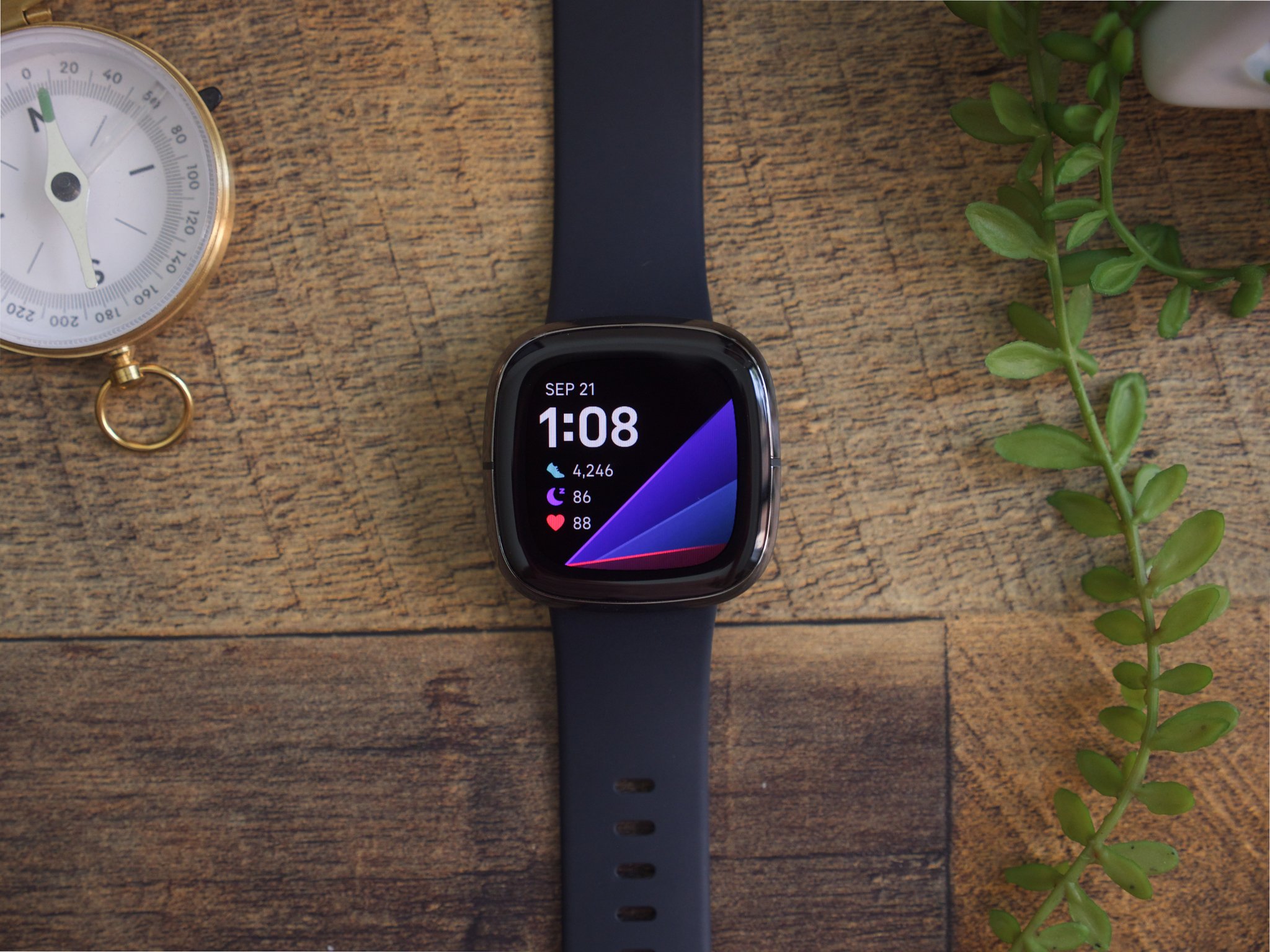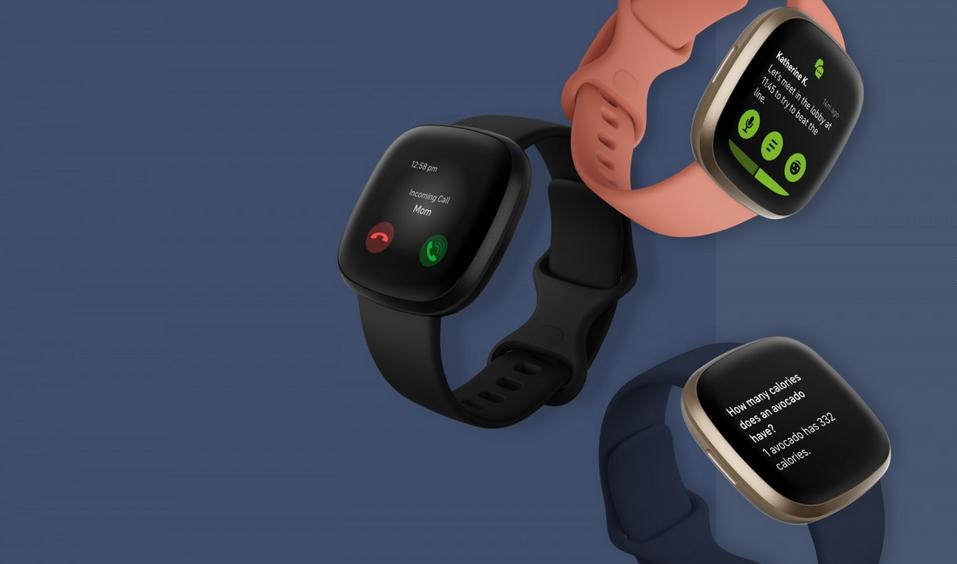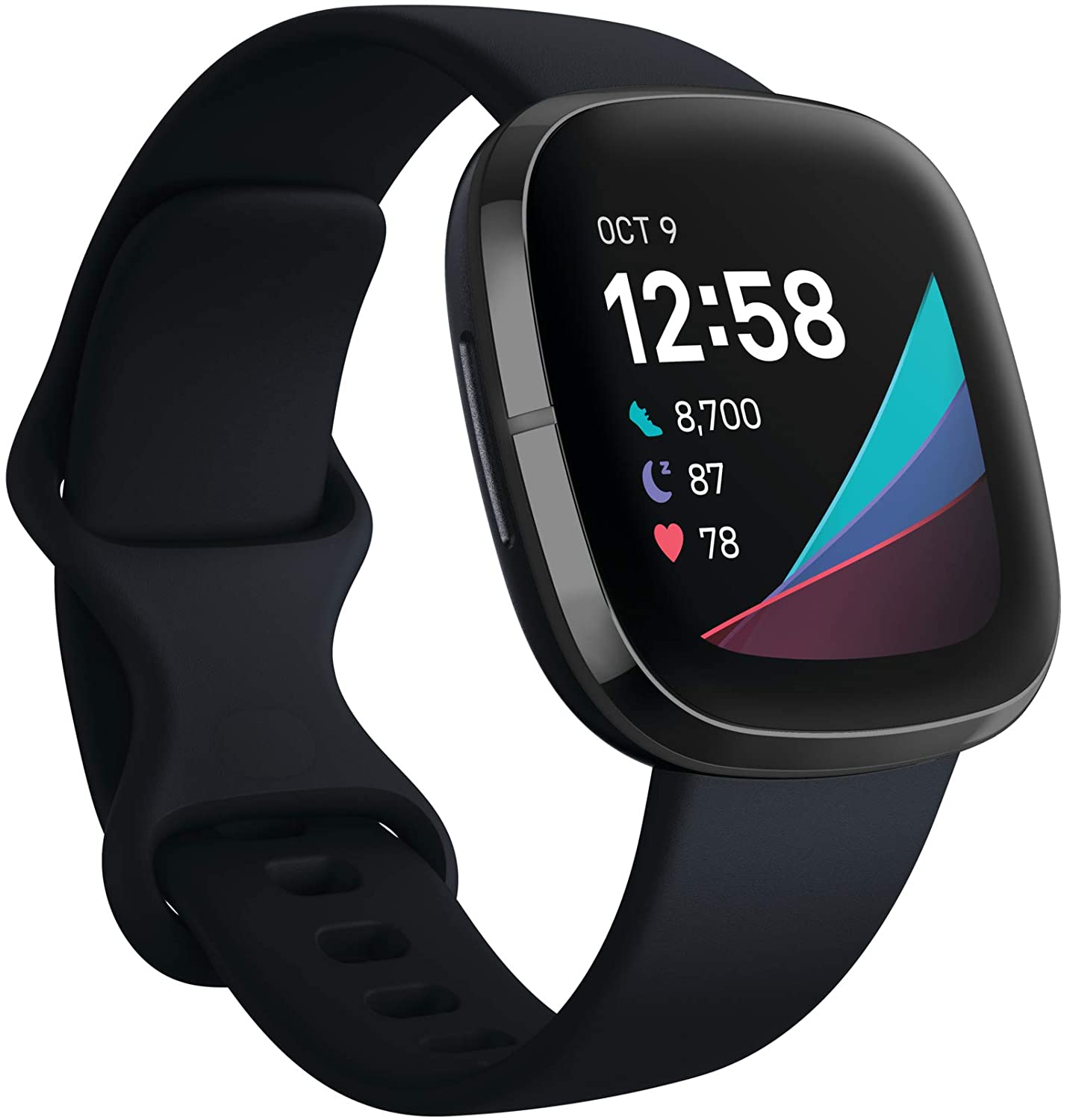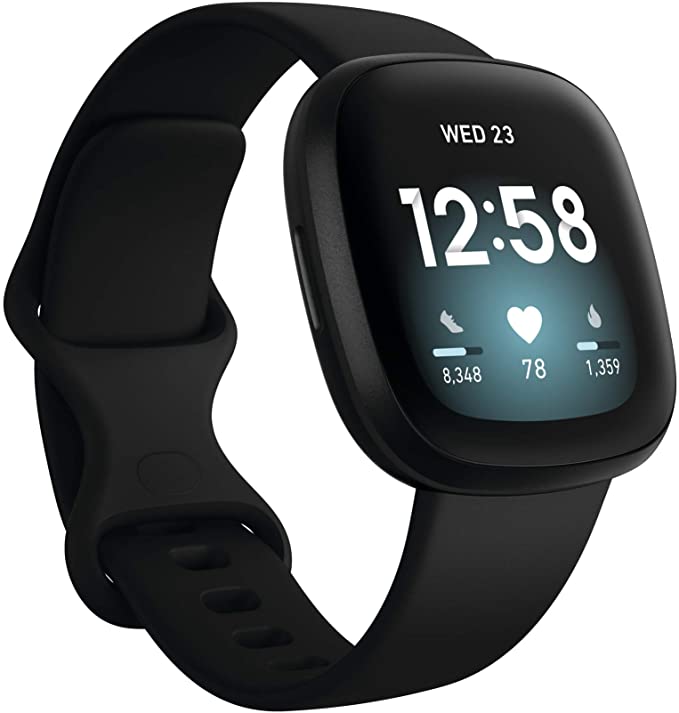Fitbit Sense is Fitbit’s most advanced smartwatch to date. On top of all-day activity and sleep tracking, it offers advanced features like EDA, ECG, and HRV for more comprehensive health and fitness tracking. It’s fast charging, offers media, smart assistant, and six-plus days of battery life.
Pros
- EDA
- ECG
- HRV
- Fast charging
- 6+ day battery life
Fitbit Versa 3 is a smartwatch that offers all-day activity and sleep tracking, Sp02 monitoring, and built-in GPS. It’s not jam-packed with advanced features like the Sense, but it does have media, is fast charging, and delivers six-plus days of battery life.
Pros
- Sp02
- Built-in GPS
- Fast charging
- 6+ day battery life
Fitbit Sense and Fitbit Versa 3 are two of the best Fitbits available on the market right now. You’re going to get more with Fitbit Sense — it hosts all the advanced features Fitbit has to offer. However, it does cost a pretty penny. On the other hand, the Fitbit Versa 3 is a noteworthy smartwatch and a bit less expensive if you’re on a budget. Which is for you?
Fitbit Sense vs. Fitbit Versa 3: Features and specs
Since these two options are some of the best Fitbit has to offer, your final choice really comes down to features and price. Fitbit Sense offers EDA, ECG, and heart rate variability for more advanced health and fitness tracking. However, those extra features come at an additional cost. You’re not going to get all those bells and whistles with Versa 3, but if you’re not going to use those features, why pay for them? Let’s break down the specs to see how they are alike and where they differ.
| Fitbit Sense | Fitbit Versa 3 | |
|---|---|---|
| Display type | AMOLED | AMOLED |
| Display size | 1.58 inches | 1.58 inches |
| Always-on | Yes | Yes |
| Battery life | 6+ days | 6+ days |
| Fast charging | Yes | Yes |
| Internal storage | 4GB | 4GB |
| Media play, stream, storage | Yes | Yes |
| Bluetooth | Yes | Yes |
| Wi-Fi | Yes | Yes |
| All-day activity tracking | Yes | Yes |
| Sleep tracking | Yes | Yes |
| EDA | Yes | No |
| ECG | Yes | No |
| HRV | Yes | No |
| Sensors | Accelerometer, altimeter, heart rate monitor, gyroscope, ambient light, pulse oximeter, ECG, thermometer | Accelerometer, altimeter, heart rate monitor, gyroscope, ambient light, pulse oximeter, thermometer |
| Smart pay | Fitbit Pay | Fitbit Pay |
| Smart assistant | Yes | Yes |
| Voice command | Yes | Yes |
| Companion app | Fitbit app | Fitbit app |
| Compatibility | Android + iOS | Android + iOS |
| Customizable watch face | Yes | Yes |
| Interchangeable bands | Yes | Yes |
These two wearables are very similar, both in aesthetics and their features. Bottom line: you’ll get more advanced features with Fitbit Sense, but Fitbit Versa 3 is still a great smartwatch.
Fitbit Sense vs. Fitbit Versa 3: Makes the most sense

Source: Joe Maring / iMore
Fitbit Sense makes the most sense if you can expense the slightly higher price tag. It’s outfitted with all the health and fitness tracking features we’ve come to know and love via Fitbit, with the addition of some new, exciting features for more comprehensive health and fitness monitoring.
ECG monitoring is an exciting feature the Sense has over Fitbit Versa 3. You can assess your heart for atrial fibrillation — a heart rhythm irregularity. If anything is offbeat (literally), you can share these results with your doctor.
Unlike Fitbit Versa 3, Fitbit Sense features heart rate variability monitoring. This variation of time between each heartbeat can show and alert you to potential signs of stress, illness, or fatigue. You can view your nightly average and trends in the Health Metrics dashboard.
EDA scans are another feature the Sense has that Versa 3 does not. On-wrist EDA scans detect electrodermal activity, which may indicate your body’s response to stress. All of this is displayed on a graph in the Fitbit app so you can watch trends over time. You’ll get a daily Stress Management Score to understand better how your body is handling stress.
This data comes into play with your Daily Readiness Score, but this is only available with a Fitbit Premium membership (sold separately). This score shows whether you’re ready for a vigorous workout, need to take it easy, or need a day off for full-body recovery. You’ll also receive insights from your exercise, sleep, and heart rate variability.
Fitbit Sense vs. Fitbit Versa 3: Valuable features at a lower price tag

Source: Fitbit
Even though Fitbit Versa 3 doesn’t have as many premium features as the Sense, it still has valuable attributes worth discussing. For instance, it offers Sp02 monitoring and built-in GPS. Like the Sense, it offers the smart tech we’ve come to expect via our smartwatches like a smart assistant, media play, stream, storage, and smart pay.
Let’s talk Sp02 because you will get this feature in both wearables. Keep in mind that this feature is only accessible with an Sp02 watch face. Sp02 monitoring measures the amount of oxygen in your blood. This can be particularly helpful in flagging illnesses or important changes in your health you’ll want to address immediately. For example, low blood oxygen numbers could indicate possible illnesses.
Built-in GPS is nothing new, but it is for the Versa family. Fitbit Versa 3 is the first member of the Versa lineup to offer it. You can see real pace and distance sans phone during outdoor runs, rides, hikes, and walks. Then, you can view maps of your workout routes in the Fitbit app.
These wearables have about 4GB of internal storage, so you can download and play your favorite Deezer and Pandora media. You can also control, play, and stream anything from your Spotify account right from your wrist.
Fitbit Sense vs. Fitbit Versa 3: Customization, battery life, and Premium

Source: Fitbit
Both wearables offer essentially the same thing when it comes to customization and battery life. They both use the same interchangeable bands, and there are hundreds of clock face designs to choose from.
Fitbit Versa 3 does come in more factory colors. You have five to choose from versus three with Fitbit Sense. Both offer six-plus days of battery life depending on usage. Keep in mind that battery life significantly diminishes if you operate in GPS, Bluetooth, or Wi-Fi modes a lot.
Finally, it should be noted that all of your Fitbit’s features are not readily available. Some features like Daily Readiness Scores and additional insights and guidance regarding your health and fitness data are only available with a Fitbit Premium monthly membership. Purchasing Fitbit Sense comes with six months of Fitbit Premium (for new members only), while Fitbit Versa 3 does not. You can add one year of Premium with your Versa 3 purchase, but it’s $53, which makes it more expensive than the Sense at time of purchase if you opt for that.
Fitbit Sense vs. Fitbit Versa 3: Which should you buy?
Fitbit Sense is the obvious choice if you can expense it. It’s not that much more than Fitbit Versa 3, and you get everything you’d get with Versa 3 and then some like EDA, ECG, and HRV. However, if you’re on a tighter budget, or wouldn’t necessarily use those additional features, Fitbit Versa 3 is still a great smartwatch.
Additionally, you might want to consider if you’re going to add on Fitbit Premium. Users can access additional data and features using the service, but it does cost a pretty penny. Food for thought, but the Fitbit Sense is the way to go.
Winner
Fitbit Sense
It makes sense
Fitbit Sense offers everything we love about Versa 3 and more, like EDA, ECG, and heart rate variability monitoring.
Runner up
Fitbit Versa 3
Noteworthy
Fitbit Versa 3 is lighter on the wallet and offers built-in GPS, Sp02, smart features, and all-day activity and sleep tracking.
We may earn a commission for purchases using our links. Learn more.
Source link







